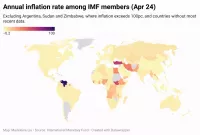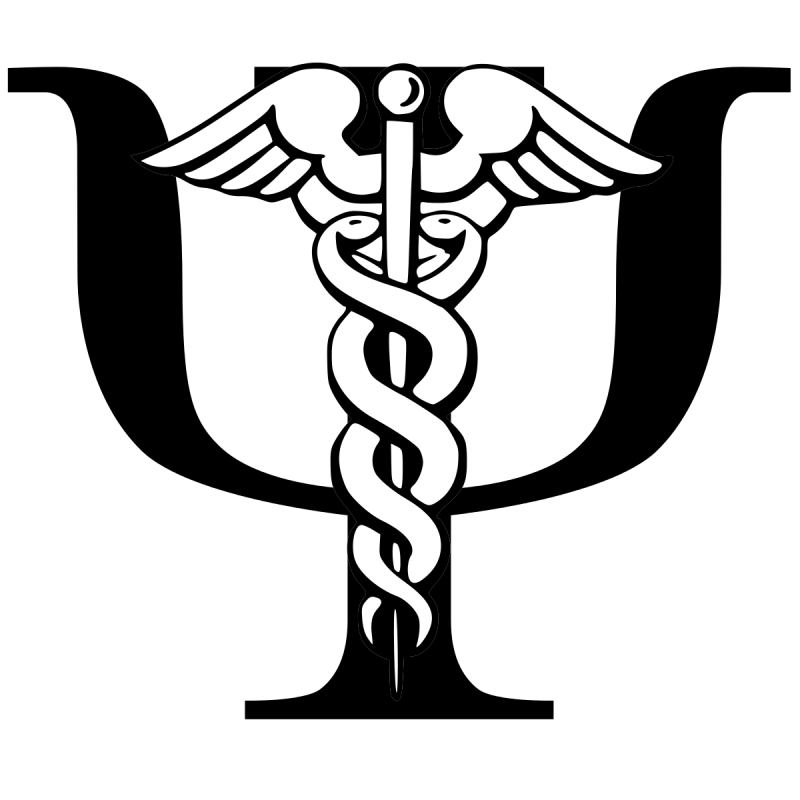Mental health encompasses emotional, psychological, and social well-being, impacting cognition, perception, and behavior. It's crucial for managing stress, interacting with others, and overall life contribution. The WHO defines it as a state where individuals realize their abilities, cope with stress, work productively, and contribute to their community. It influences stress management, relationships, and decision-making. Mental health includes well-being, self-efficacy, autonomy, competence, intergenerational dependence, and self-actualization of intellectual and emotional potential.
1908: Clifford Beers Publishes A Mind That Found Itself
In 1908, Clifford Beers published his accounts as a patient in several lunatic asylums, "A Mind That Found Itself", detailing his experiences and advocating for mental health reform.
1908: Clifford Whittingham Beers Describes Mental Hospital Conditions
In 1908, Clifford Whittingham Beers published "A Mind That Found Itself", detailing the poor treatment he received and the terrible conditions of the mental hospital where he stayed.
1908: Mental Hygiene Movement Inspired by Clifford Beers
In 1908, the mental hygiene movement was inspired by Clifford Beers, marking a major reform in mental health policies in the United States.
1939: Penrose Hypothesis
In 1939, the Penrose Hypothesis theorized an inverse relationship between prison population size and the number of psychiatric hospital beds, suggesting a transition of patients between institutions.
1961: Deinstitutionalization Started by Action for Mental Health
In 1961, deinstitutionalization was started by Action for Mental Health, representing a significant reform in mental health policies in the United States.
1961: Action for Mental Health Report Published
In 1961, the Joint Commission on Mental Health released "Action for Mental Health", advocating for community clinics to handle prevention and early intervention, freeing up hospitals for severe cases.
1963: Community Mental Health Centers Act
In 1963, the Community Mental Health Centers Act was enforced, which laid out terms in which only patients who posed an imminent danger to others or themselves could be admitted into state facilities, leading to the closure of state-provisioned psychiatric hospitals.
1975: Community Support Program (CSP) created by NIMH
In 1975, the National Institute of Mental Health (NIMH) established the Community Support Program (CSP) to allocate funds for communities to create comprehensive mental health services and support systems, emphasizing the importance of housing, living expenses, employment, transportation, and education, along with medical care.
1975: Community Support Movement Called for by The CMCH Act Amendments
In 1975, the community support movement was called for by The CMCH Act Amendments, contributing to a major reform in mental health policies in the United States.
1977: Community Mental Health Centers Established
By 1977, 650 community mental health centers were established, covering 43% of the population and serving 1.9 million individuals annually. However, these centers faced financial challenges due to inflation, and the community support system was not fully established, leading to issues such as patients returning to welfare, criminal justice institutions, and homelessness.
1979: Establishment of NAMI
In 1979, the National Alliance on Mental Illness (NAMI) was founded in the U.S. to represent and advocate for those struggling with mental health issues.
1980: Mental Health Systems Act Enacted
In 1980, the Congress enacted the Mental Health Systems Act, prioritizing services for the mentally ill and emphasizing the expansion of services beyond clinical care alone.
1990: First State Hospital Closure
Around 35 years after the start of deinstitutionalization, in 1990 the first state hospital began to close. The number of hospitals dropped from around 300 by over 40 in the 1990s, and a Report on Mental Health showed the efficacy of mental health treatment.
1990: Kessler et al. Study on Mental Disorder Prevalence and Treatment
The study by Kessler et al. from 1990 to 2003 in the United States showed that despite the prevalence of mental health disorders remaining unchanged, the number of patients seeking treatment increased threefold.
1998: Changing Minds Campaign
In 1998, the Royal College of Psychiatrists organized the Changing Minds campaign to help reduce stigma associated with mental illness in the United Kingdom.
1998: World Mental Health (WMH) Survey Initiative
In 1998, the World Health Organization (WHO) created the World Mental Health (WMH) survey initiative to investigate the degree and severity of untreated emotional mental disorders worldwide.
2003: Conclusion of Changing Minds Campaign
In 2003, the Changing Minds campaign organized by the Royal College of Psychiatrists in the United Kingdom to help reduce the stigma associated with mental illness ended.
2003: Kessler et al. Study on Mental Disorder Prevalence and Treatment
The study by Kessler et al. from 1990 to 2003 in the United States showed that despite the prevalence of mental health disorders remaining unchanged, the number of patients seeking treatment increased threefold.
2004: Mental Health Services Act Marketing Initiatives
In 2004, the Mental Health Services Act began funding marketing initiatives in California to educate the public on mental health and combat negative perceptions.
2004: WHO Report on Prevention of Mental Disorders
In 2004, the WHO published the "Prevention of Mental Disorders" report, emphasizing the increasing focus on preventing mental disorders.
2008: EU Pact for Mental Health
In 2008, the EU introduced the "Pact for Mental Health," indicating a growing emphasis on mental health strategies.
2009: Meta-Analysis on Unemployment and Mental Health
According to a 2009 meta-analysis by Paul and Moser, countries with high income inequality and poor unemployment protections experience worse mental health outcomes among the unemployed.
2010: Global Cost of Mental Illness
A World Health Organization (WHO) report estimates the global cost of mental illness at nearly $2.5 trillion (two-thirds in indirect costs) in 2010.
2011: National Prevention Strategy Includes Mental Well-being
In 2011, the National Prevention Strategy incorporated mental and emotional well-being, advocating for enhanced parenting and early intervention programs, potentially leading to the inclusion of prevention programs in future US mental health policies.
2011: US National Prevention Strategy
In 2011, the US launched the National Prevention Strategy, reflecting the increasing focus on preventing mental disorders.
2013: Helping Families in Mental Health Crisis Act Introduced
In 2013, United States Representative Tim Murphy introduced the Helping Families in Mental Health Crisis Act, HR2646.
November 2015: Helping Families in Mental Health Crisis Act Passed Health Subcommittee
In November 2015, the Helping Families in Mental Health Crisis Act passed the Health Subcommittee by an 18–12 vote.
2017: Meta-Analysis on Social-Emotional Learning (SEL)
In 2017, a meta-analysis by Alexendru Boncu, Iuliana Costeau, & Mihaela Minulescu found a small but significant effect size for externalized problems and social-emotional skills in social-emotional learning (SEL) studies.
2018: Politicization of Religion in Mental Healthcare
In 2018, the theme of religion in mental healthcare was widely politicized, such as with the creation of the Religious Liberty Task Force in July.
2019: Mental Health Disorders in Young People
As of 2019, approximately one in seven of the world's 10–19 year olds experienced a mental health disorder, totaling about 165 million young people.
2019: Worldwide Mental Disorder Statistics
In 2019, approximately 970 million individuals globally were affected by a mental disorder, with anxiety and depression being the most prevalent.
2021: Prevalence of Mental Illness in America
As of 2021, over 22% of Americans over the age of 18 meet the criteria for having a mental illness.
2021: Mental Illness Statistics in the United States
In 2021, roughly 17.5% of the population (ages 18 and older) in the United States were recorded as having a mental illness, with younger generations reporting higher rates compared to older generations.
2030: Projected Leading Cause of Disease Worldwide
By 2030, major depression is predicted to become the leading cause of disease worldwide.
Mentioned in this timeline
The United States of America is a federal republic located...
California is a U S state on the Pacific Coast...

Inflation in economics signifies an increase in the average price...

The World Health Organization WHO is a specialized agency of...

Justice in its broadest sense is the concept of treating...

A community is a social unit defined by shared characteristics...
Trending

6 months ago Randy Travis and Wife Invest in Jackson's Metrocenter Mall Revitalization Project.
1 month ago Prince George's Royal Debut: Joins Kate, King Charles at Remembrance Festival.

A meteor shower is a celestial event where numerous meteors appear to radiate from a single point in the night...

2 months ago Michael J. Fox Reflects on 'Teen Wolf' and 'Back to the Future' in Memoir.
6 days ago Jeremy O. Harris, 'Emily in Paris' Actor, Arrested in Japan for Drug Smuggling
Maribel Guardia a Costa Rica-Mexican actress gained initial recognition as Miss Costa Rica and subsequently participated in Miss Universe She...
Popular

Candace Owens is an American conservative political commentator and author...

XXXTentacion born Jahseh Dwayne Ricardo Onfroy was a controversial yet...

Ilhan Omar is an American politician currently serving as the...
Matt and Ross Duffer known as the Duffer Brothers are...

Tom Cotton is an American politician and Army veteran currently...
The Kennedy Center Honors are annual awards recognizing individuals and...
